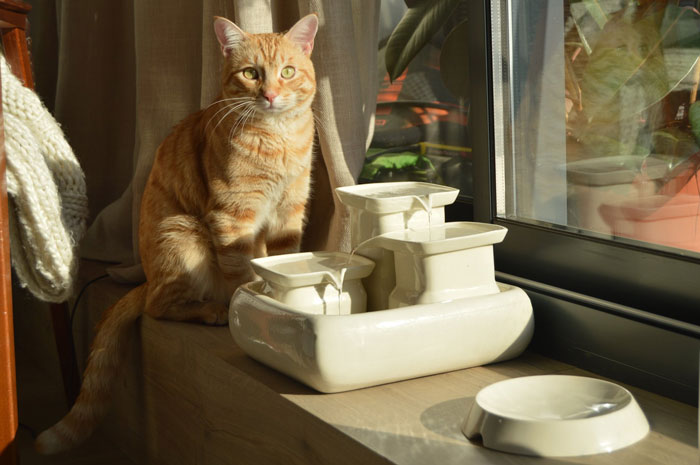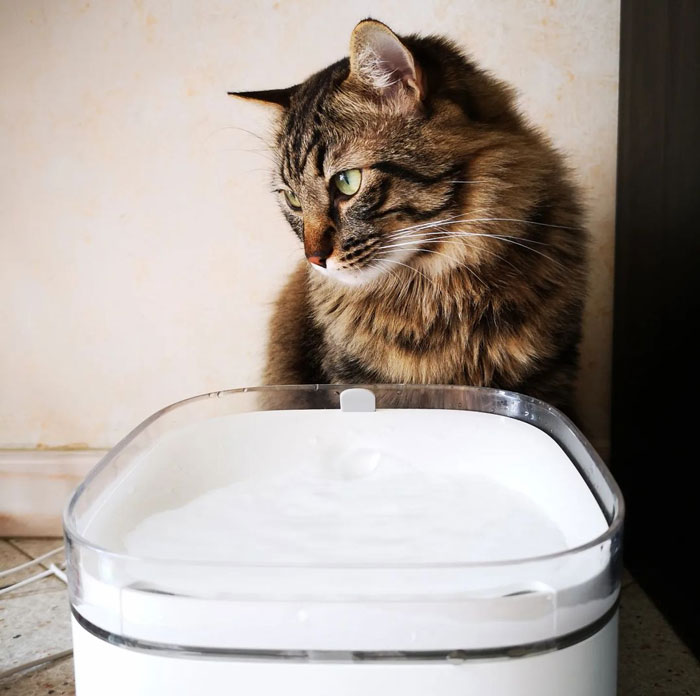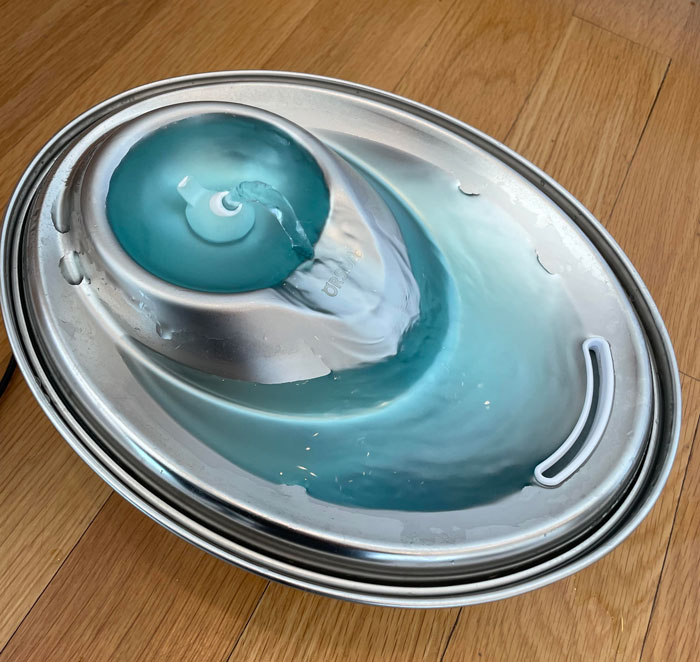Did you know that cats often prefer running water and are instinctually drawn to it as a cleaner source?Cat water fountainsare a great way to encourage your kitty to drink more, but they also reduce the frequency of cleaning and refilling their water dish.
However, just like anything else, these fountains need regular cleaning to keep the water safe and healthy for your kitty. A dirty fountain causes many issues to our cat’s health, and trust me – you want to avoid that.
The information provided herein is for informational purposes only. Please refer to ourdisclaimerfor more details..
Why Cat Water Fountains Need Special Cleaning
Image credits:

Cleaning a regular water bowl is easy. But fountains have extra parts, pumps, and little spaces… so why all the extra effort? Here’s why you need to prioritize regular deep cleaning:
Let’s be honest – you wouldn’t drink from a glass covered in a fine layer of slime with bits of unknown matter floating around. Your cat deserves better! Regular, thorough cleaning is essential to ensure your furry companion has access to fresh and clean water sources for the best hydration.
The Essential Cleaning Toolkit
Don’t worry; you don’t need a lot of equipment to tackle this job! Even these supplies can be easily available in your home:
Image credits:muffin.mapo.page

Cleaning your cat’s fountain may not be topping your list of favorite chores. But if you transform this into a simple, consistent routine, it can be a game-changer for your cat’s health.
Daily Maintenance
Weekly Cleaning
Deep Cleaning (Monthly or As Needed)
Household vinegar has mild acidic properties that help dissolve mineral deposits and tackle developing biofilm. It’s a safer alternative to bleach for routine cleaning. Here is the process:
Important Notes:
Tips for Optimal Fountain Hygiene

We’ve covered the cleaning basics, but a few extra considerations can make a world of difference in keeping your cat’s fountain healthy. Here are some extra insider tips:
Frequently Asked Questions
My cat seems hesitant about the fountain. How can I encourage them?
Is distilled water better for cat water fountains?
While distilled water removes all minerals, it can make the water taste a bit flat for cats. In most cases, tap water filtered through the fountain’s filter is perfectly safe. If you have very hard water with noticeable buildup, a mix of filtered tap water and distilled water could be a good compromise to reduce mineral deposits without affecting the taste too much.
Should I use bottled water in my cat’s fountain?
It depends on the quality of your tap water. If your tap water is safe for you, it’s usually safe for your cat, especially when used with the fountain’s filter. Bottled water can be a good option if you’re concerned about contaminants in your tap water, but it can get costly over time. Remember, change the fountain water daily, even with bottled water, to prevent bacteria buildup.
How often should I change the fountain filter?
Always follow the fountain manufacturer’s recommendations, as the lifespan of filters can vary. Generally, filters should be changed every 2-4 weeks to keep the water fountain clean. More frequent filter changes might be necessary if you have several cats or cats that shed a lot.
My fountain keeps getting noisy. What should I do?
A noisy fountain usually has two causes: low water levels or a dirty pump. First, make sure the fountain reservoir is filled to the recommended level. If it’s still noisy, it’s time for a pump cleaning. Carefully disassemble the pump and clean any debris that might be obstructing the impeller (the spinning part). Consult your fountain’s manual for specific instructions.
876views876views
Pet Wellness